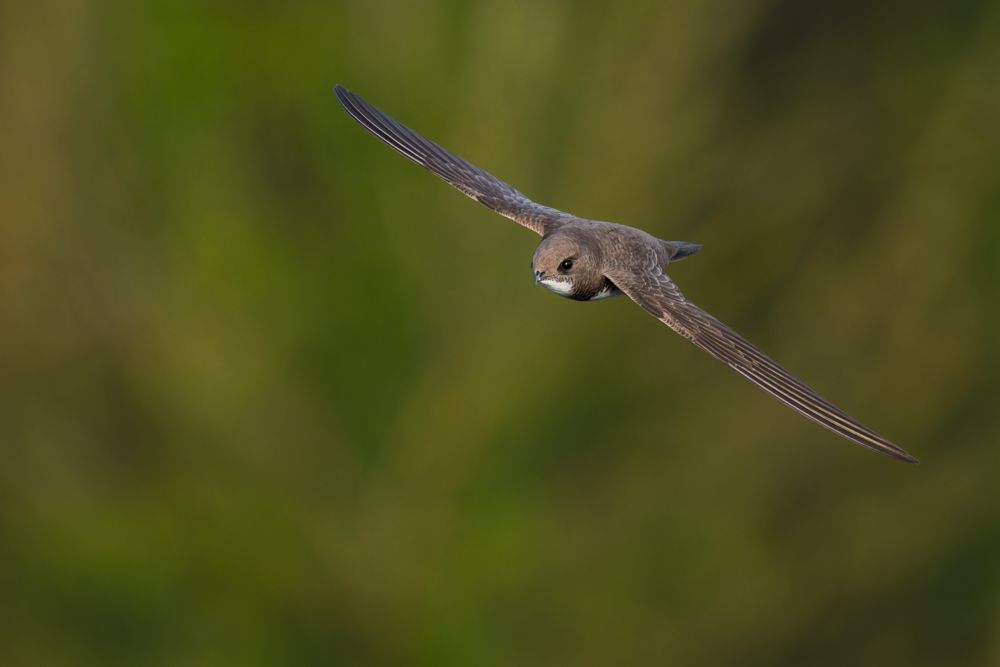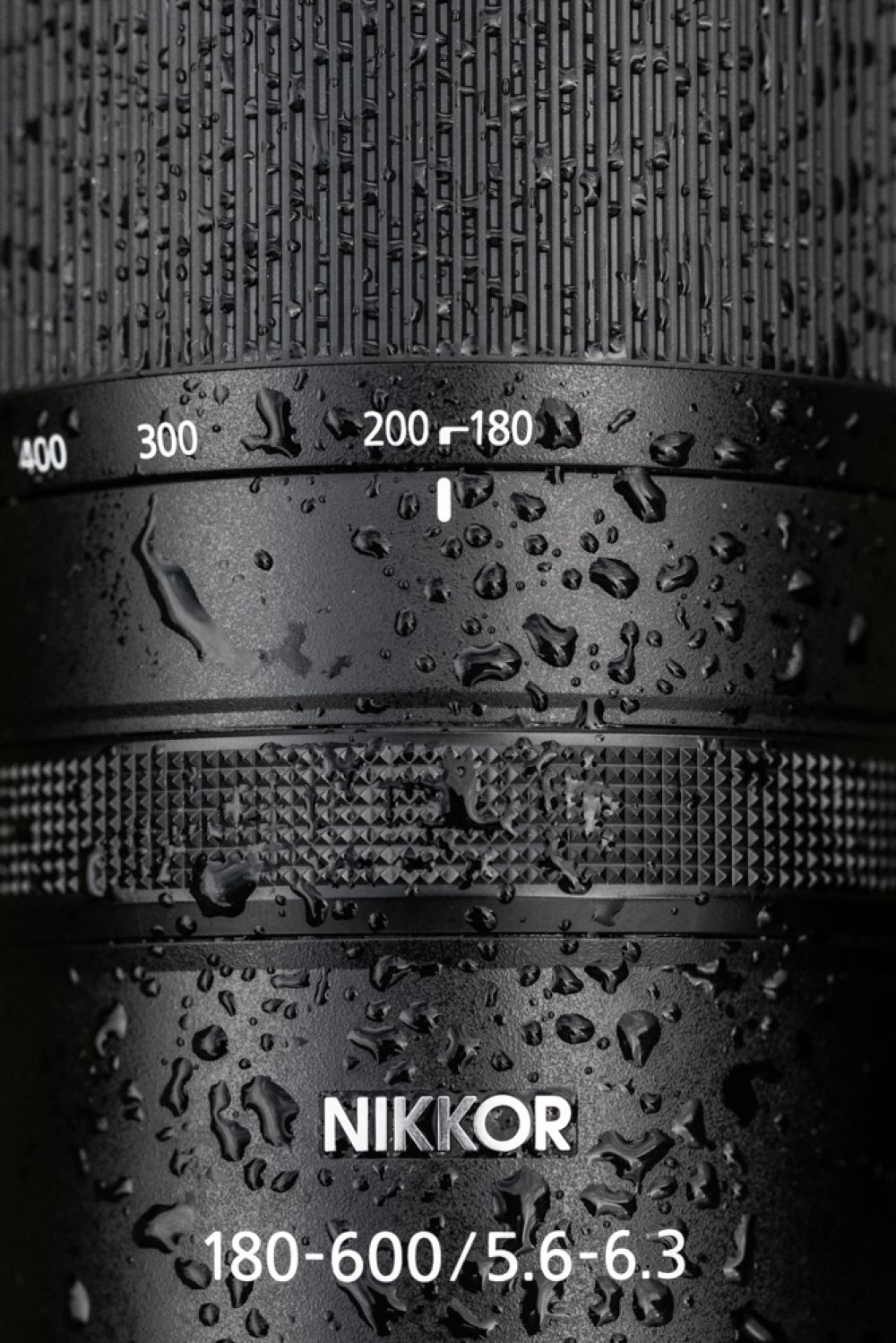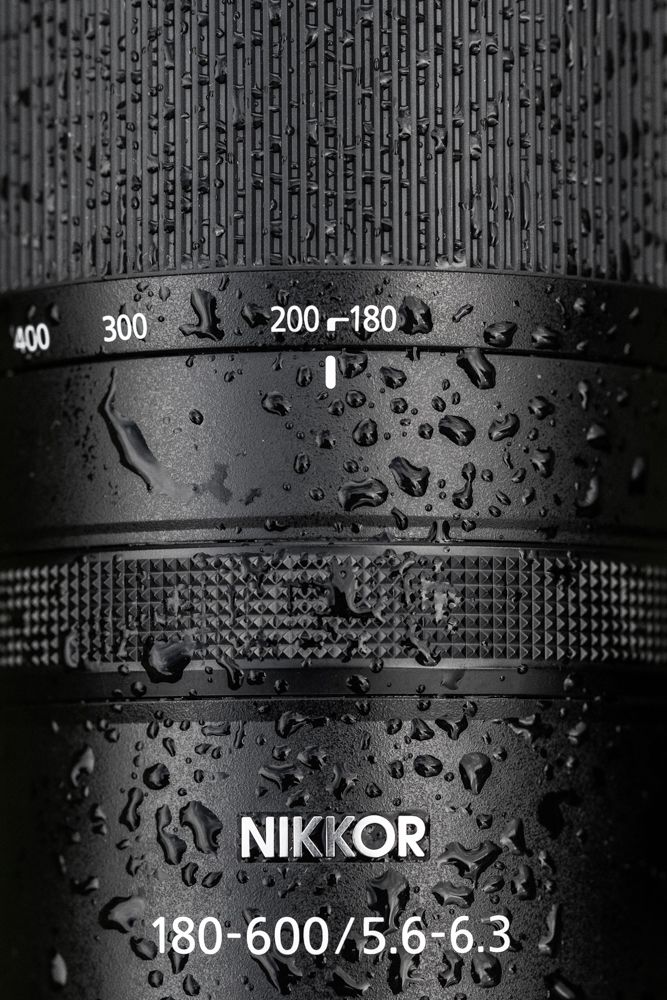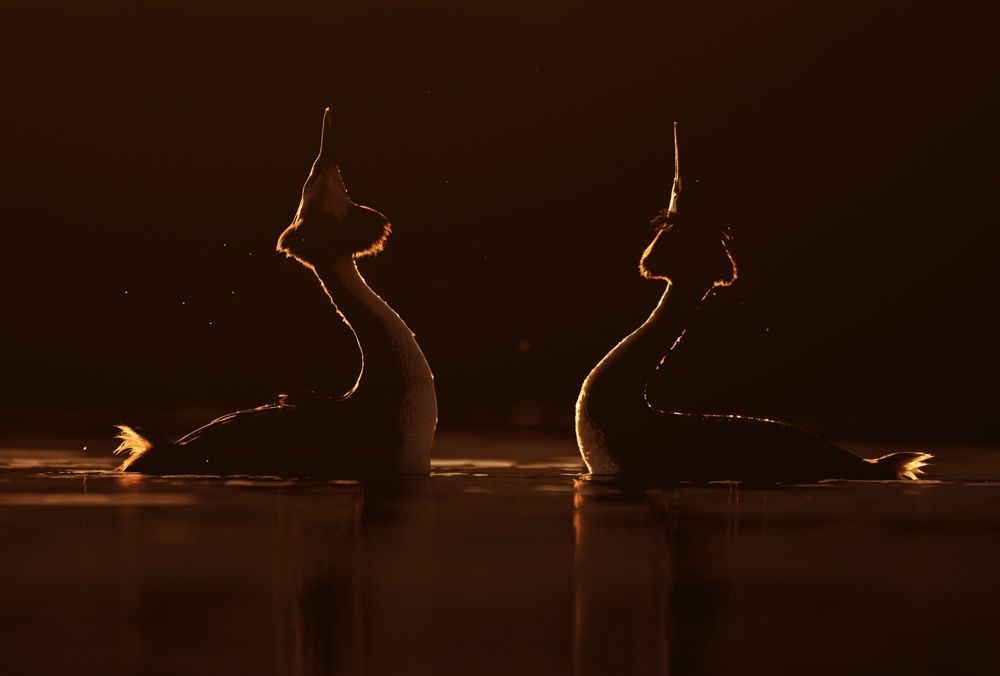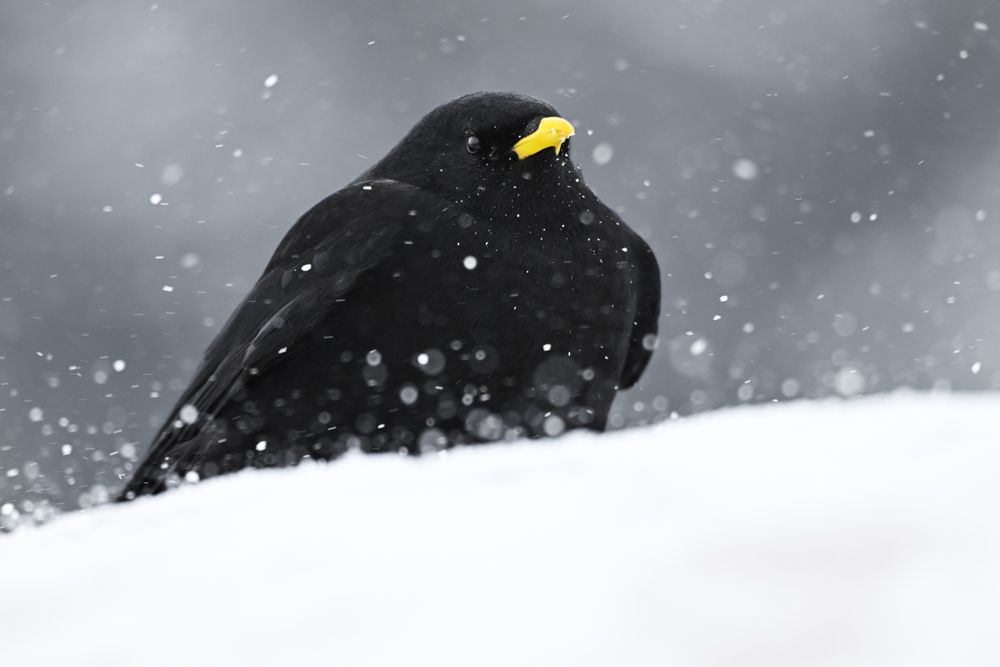Nikon Z 180-600: The telephotolens for beginners & enthusiasts
The Nikon AF-S 200-500 mm 5.6 has been an extremely popular lens for DSLR cameras for wildlife and bird photography. While there are already quite a few telephoto lenses for the Z mount, an equivalent to the 200-500 has been missing until now. This is now changing!
The Nikkor Z 180-600 mm 5.6-6.3 VR is the ideal entry-level telephoto lens to wildlife and bird photography. The internal zoom makes this lens enormously flexible, yet it still offers the image quality usual from the Nikon Z Mount. And at a good price too!
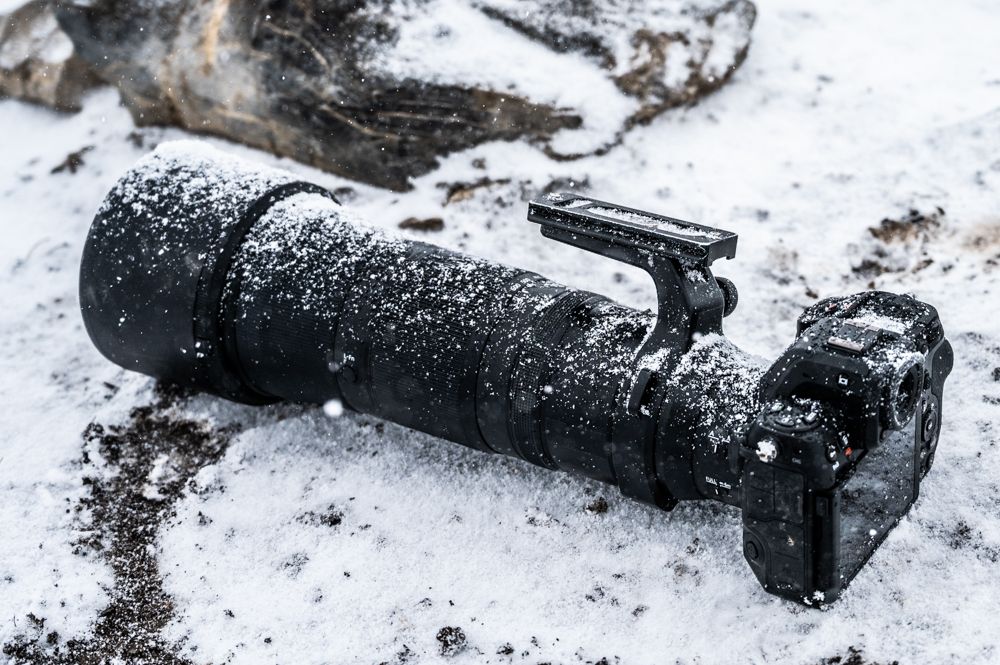
The combination of the Nikon Z 8 with the Z 180-600 5.6-6.3 is the perfect entry into the world of wildlife and bird photography.
As one of the few official photographers, I was allowed to test the new lens together with the Z 8 for a few weeks at the beginning of the year to take the photos for the market introduction. I have now summarised my impressions of the lens so far in this article. Of course, there are also many of the photos taken with it.
An overview of the lens
The Nikkor Z 180-600 5.6-6.3 VR weighs about 2.1 kg, but its small size makes it very handy, and especially on the Z 8 it is easily handholdable for longer periods of time. As an internal zoom it is a little longer than the 100-400, but the lens should be even more resistant to rain, sand and dust.
Image quality
When it comes to image quality, I am used to very high standards with the Z 400 2.8 TC VR S. And even though the sharpness of the Z 180-600 doesn't quite match the 400 2.8, I was very surprised at how well the lens performed. Over the entire zoom range and also from the minimum focus distance to infinity, the lens showed very good optical performance. There are practically no chromatic aberrations or other colour aberrations, and the lens is certainly sharp.
The excellent image quality of the lens is also reflected in the fact that it works very well with the teleconverters. There is a minor difference between the 1.4x TC (250-900 f/8-f/9) and the 2x TC (360-1200 f/11-f/13), but overall I was very happy with both combinations.
For 'ordinary' animal photos I would rather recommend the 1.4x teleconverter, as this produced the slightly sharper images and with a maximum aperture of f/9 at 900 mm, there is still enough light to work with, even in darker conditions. Nevertheless, the images with the 2x TC also came out quite well. However, I would recommend the latter mainly for close-ups, as it offers almost too much focal length in more usual shooting situations and you're also sacrificing quite a bit of light.
An important note about the teleconverter: With both teleconverters, the entire zoom range is available meaning you can fully zoom out to 180 mm even with the 2x TC, but then of course you simply get 360 mm.
Autofocus
From my old Sigma 150-600 4.5-6.3 Sport I remember that the autofocus was not really that good. But I soon realised that the autofocus of the Nikkor 180-600, together with the Z 8, wasn't really challenged in many of the normal scenarios. In order to find the limits of the Z 8 with the 180-600, I finally took the camera to the fastest and most agile birds in Switzerland - the Alpine Swifts. I was also able to photograph Alpine Accentor and Snow Sparrows in flight.
Of course, in direct comparison, the Z 400 2.8 TC VR S is much faster and more accurate than the 180-600, but the 400 costs almost 8 times as much. So all in all, I was very impressed with the lens in terms of autofocus speed.
Another important note: The autofocus system of the Nikon Z 9 & Z 8 work very well, but choosing the right settings for every scenario makes a big difference. I noticed that with the right settings you can get a lot more out of the AF system. For a general overview of the camera, I recommend the courses by Nikon School. For specific questions regarding the use of the camera in wildlife photography and tips and tricks, I offer private courses.
Handling
Besides sharpness and autofocus, the overall handling of the lens is of course a very important factor as well. I am mainly referring to the use of the lens on the Nikon Z 8, which has become much lighter compared to the Z 9.
Internal Zoom
The most important thing about the lens - it is an internal zoom. This means that if you turn the zoom ring, the lenses are only moved internally, but externally the lens remains exactly the same length. On the one hand, this has the advantage that there is way smaller chance that sand or water could get into the lens. A normal extending lens barrel is particularly susceptible to this.
External zooms also usually* come with the disadvantage that their centre of gravity changes depending on the focal length. Especially zooms with a focal length of up to 600 mm (or with a teleconverter up to 1200 mm), which you will use on a tripod from time to time, this can be extremely annoying.
It also prevents the effect of lens creeping*. If you hold a usual super-telephoto zoom towards the sky, it can happen that the front element moves back unnoticed due to its own weight. Of course, this can also happen if the lens hood is pushed or bumped lightly against something, causing the lens to retract without being noticed.
* With the Nikon Z 100-400, both effects have been prevented with a special zoom mechanism. Then again, this mechanism will sacrifice a bit on it's weight.
Size and weight
The disadvantage of the internal zoom, however, is its carrying size. Usually, external zooms are somewhat smaller than internal zooms when fully retracted. This is also the case here. The lens is considerably longer than the 100-400, for example, but this is not really a problem for me. I rate the better sealing much more important than the few centimetres I could have saved in my backpack. Especially as I am used to much larger carrying sizes coming from the Z 400 2.8 TC VR S, AF-S 500 mm f4 FL ED and Z 600 4.0 TC VR S.
Weighing only roughly 2.1 kg, the lens is also very light and easy to carry. With my f-stop Ajna, together with the Z 8, I still had enough space for 2-3 smaller lenses in addition. What should also not be forgotten: thanks to the great flexibility, I generally had to take fewer lenses with me, depending on the location. The lens covers such a wide range that I hardly needed my Z 70-200 2.8 or the Z 70-180 2.8, which I also had for testing. All in all, this makes a big difference, because suddenly I was only using my 37-litre f-stop Ajna instead of my way bigger and heavier 80-litre f-stop Shinn. Especially for locations where you have to walk quite far, this is a huge difference.
Thanks to the light weight of the lens and the camera, you can shoot handheld for long periods without any problems. I noticed this particularly with birds in flight where I was able to follow the agile alpine swifts much better and longer than I could've done with my 400 2.8. So if you're not sitting in a photoblind for long periods of time, you really don't need to carry a tripod for this lens. Leaving the tripod at home you'll also save another 2-3 kg.
Because of the very good image stabilisers (VR in the lens and IBIS in the camera), there is no risk of motion blur. I can't give you exact values, but I still felt really comfortable photographing at shutter speeds down to 1/80. There would probably still be much slower times possible with this lens. In the field, however, I always keep a buffer whenever possible so that I can be fairly sure of getting sharp photos. So for that reason, a shutter speed of 1/80 is a very good value in my opinion.
Flexibility
After several years of shooting almost exclusively with fixed focal lengths, it was very refreshing to be able to shoot with a zoom again. When the lens was introduced to me in the first discussions with Nikon, I immediately thought of the Alpine ibexes. With these amazing animals, I always had the feeling that the fixed focal length limited me. They are usually rather friendly and the distances change relatively quickly. This was also the main reason I bought the Z 70-200 2.8 last year, so that I could include a bit more habitat in the pictures, especially when the animals were a bit closer.
While the 180-600 didn't make the 70-200 completely obsolete, the range still covers a lot of things well. With 180 mm, you can already incorporate a relatively large amount of landscape. And in the blink of an eye you can change the angle of view to wonderful portraits or close-ups. It is worth mentioning that the entire zoom range is covered in just under 90°. Turning the zoom ring for a long time to finally reach the full focal length is a thing of the past...
The points of criticism
So far I have only listed positive things. Overall, however, I also have a few smaller things that I didn't like quite as much.
- Unfortunately, the lens foot doesn't turn quite as smoothly and the resistance can't be adjusted very well with the tightening screw.
- In general, I find the lens foot not quite as visually pleasing. It does have the advantage that you can remove the entire clamp (with the ring around the lens), but here I would have preferred the usual design of the other lenses.
- The tripod foot also has, as almost expected, no Arca-Swiss tripod plate integrated. However, since the entire clamp is connected to the ring around the lens, there will probably be no replacement foot from Wimberley. This is a bit of a shame, but I will most likely remove the lens foot altogether on my 180-600. The lens is so light that it doesn't need a tripod anyway, and otherwise I will probably use my 400 2.8 anyway. And without the lens foot, the lens is a tad lighter and smaller again (1.95 kg).
- Finally, I find the manual focus ring a little bit too thin. But this criticism is mitigated by the fact that it can be turned with relatively little but perfect resistance and you can also adjust the sensitivity or (non-)linearity .
180-600 5.6-6.3 - the telephoto lens for the Z-mount?
As far as telephoto lenses for the Nikon Z-mount are concerned, you really can't complain about the variety. The options were already vast and the 180-600 only makes it harder to decide on a lens. I was lucky enough to be able to shoot with all the lenses and can therefore compare them relatively well. Still, the choice is not easy and depends on your own preferences. So who would I recommend this lens to? Because even with it's low price point, it's actually interesting for all levels of experience...
As far as telephoto lenses for the Nikon Z-mount are concerned, you really can't complain about the variety. The options were already vast and the 180-600 only makes it harder to decide on a lens. I was lucky enough to be able to shoot with all the lenses and can therefore compare them relatively well. Still, the choice is not easy and depends on your own preferences. So who would I recommend this lens to? Because even with it's low price point, it's actually interesting for all levels of experience...
You might still have an AF-S 200-500 5.6? Then this is the perfect lens to switch to the Z-mount. And if you don't have a mirrorless camera yet, this lens together with the Z 8 is the perfect moment to switch.
Even if you might already own a fixed telephoto focal length, the 180-600 can be quite interesting. As I showed and explained with the Alpine Ibex, fixed focal lengths are not always the ideal tool. The 180-600 is ideal for precisely those situations in which you are simply too inflexible with the fixed focal length.
Also, if the fixed focal length is too heavy or takes up too much space, the 180-600 is a good alternative with which you can still take great photos.
Conclusion
All in all, I find the Nikon Z 180-600 5.6-6.3 VR a really great lens, which impressed with its high flexibility, good image quality and a very good price. Of course, I am not entirely unbiased given the circumstances of having received the lens in advance for testing. It was a great honour and a long-cherished dream for me to be able to take photos for a market introduction. For this review, I have therefore made an extra effort to include photos that show the performance of the lens, so that you can form your own opinion straight away.
If you would like to test the lens, I have ordered the lens together with a Z8 and both will be available for rent at my workshops. So you have the opportunity to see it for yourself in the field!
The links marked with (*) are affiliate links. If you click on such an affiliate link and make a purchase through this link, I will receive a commission from the respective online store. The price does not change for you.









